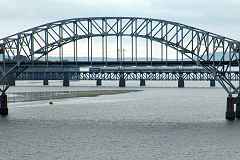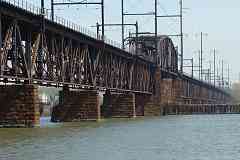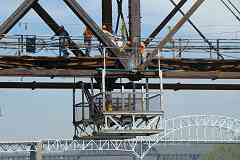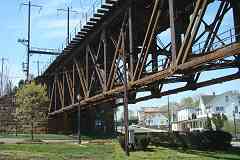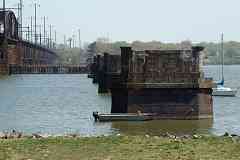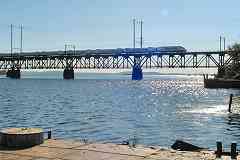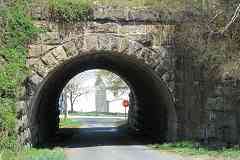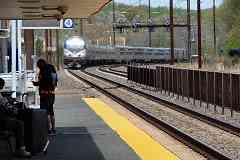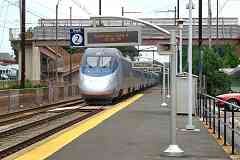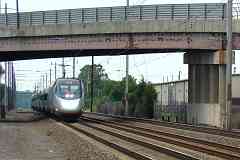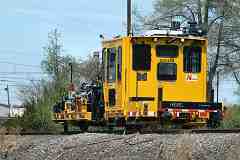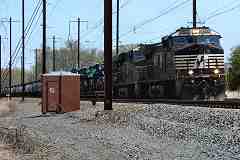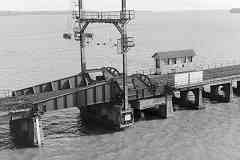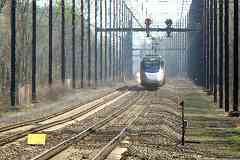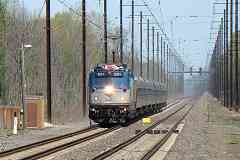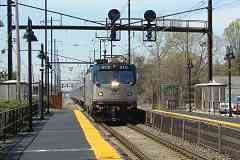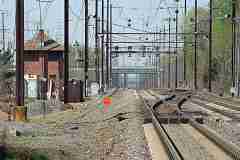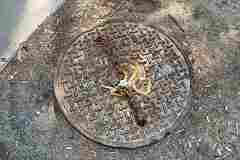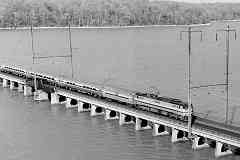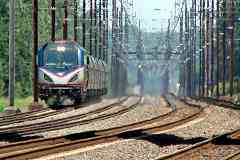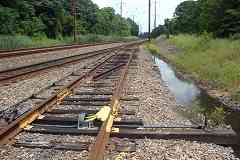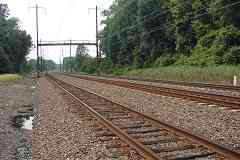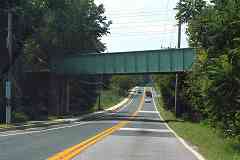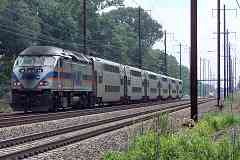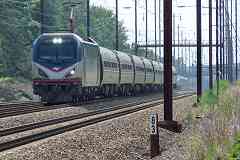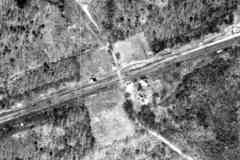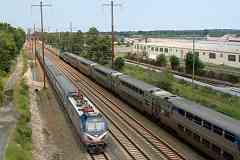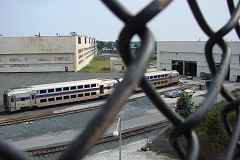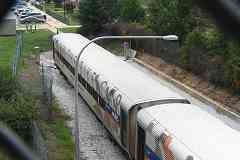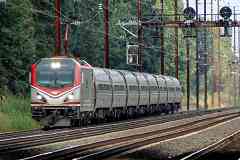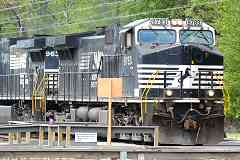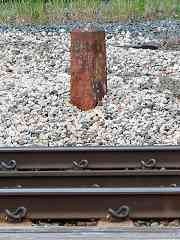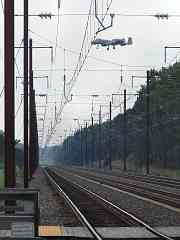|
The ex-Pennsy, now Amtrak bridge was preceded by a wooden bridge on
these adjacent, disused piers built by the
Philadelphia, Wilmington, and Baltimore Railroad (PW&B) during the
1860s. For about 30 years prior to PW&B's bridge, ferries
had floated railcars across the Susquehanna River.
After the trains had transitioned to the newer bridge, the original was
repurposed and re-opened during 1910 to carry people, carts, and early
automobiles. Due to the lofty tolls charged it became known as The
Gold Mine Bridge.
The Gold Mine Bridge was so narrow, opposing vehicles were unable to
pass each other at normal speed. After the State of Maryland purchased
the bridge, during 1926 it added a second deck over the original.
Unfortunately the upper deck was placed only 12.5 feet over the lower,
and as vehicles grew taller, soon vertical clearance became the problem.
That was solved during 1940 by the Thomas J. Hatem Memorial Bridge that
still carries US 40 across the river. The old bridge was dismantled for
scrap steel during WW II, leaving the empty piers seen in this photo.
The piers were removed during 2024 to make room for a new Amtrak bridge.
Links:
1925 photo,
1979,
2024 removal
| 